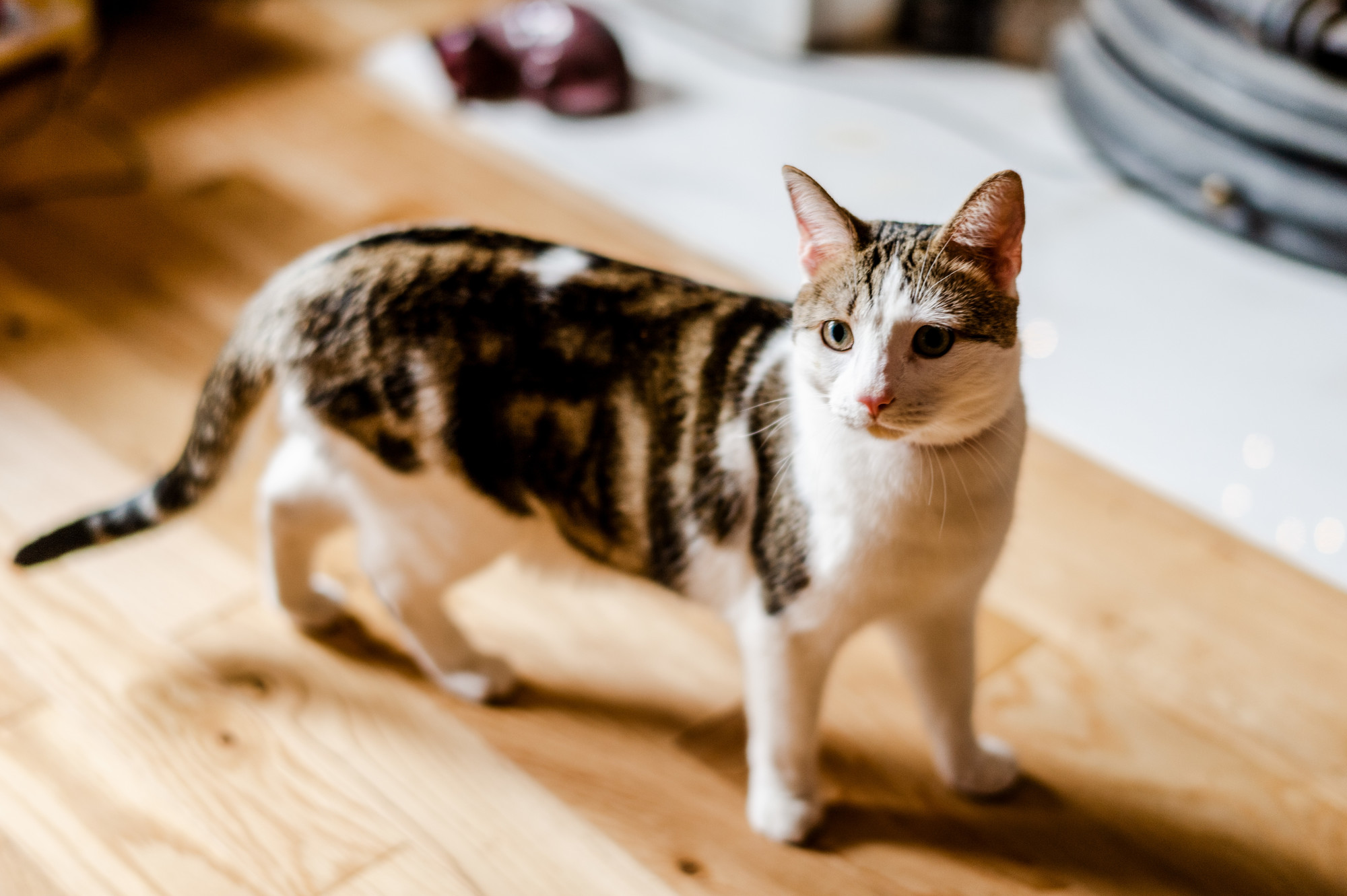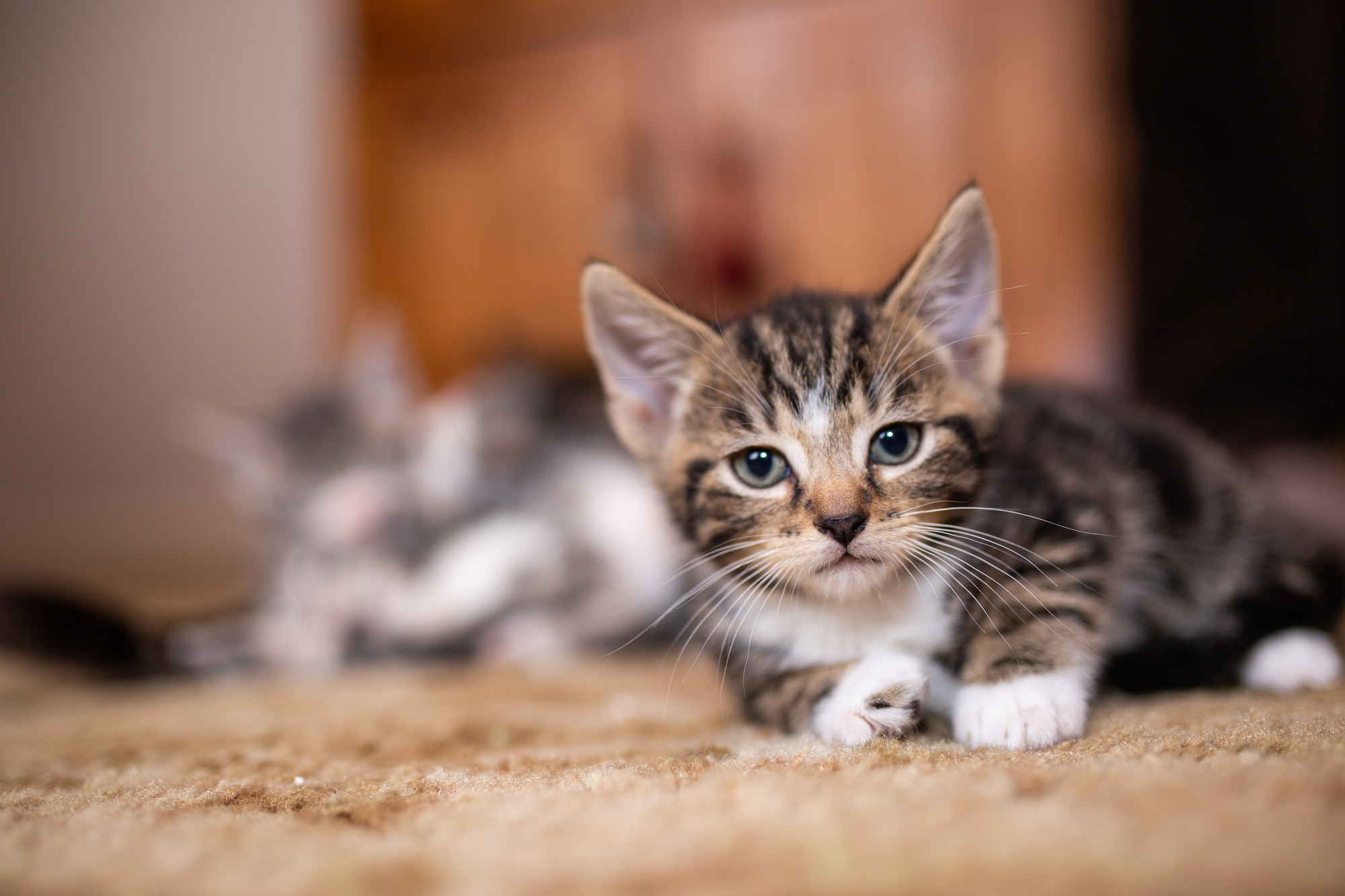
Ringworm in cats
Ringworm is the name given to a contagious, often itchy fungus that uses the top layers of skin as a source of nutrition in order to survive.
This skin disease is usually seen through missing, circular patches of fur on a cat. But lots of other (more common) skin conditions look very similar and some cats will show no signs at all.
Though it’s called ringworm, it does not have any relation to worms and more closely resembles athlete’s foot in humans.
Does my cat have ringworm?
Though signs of ringworm can vary in how they look and their severity, there are certain common symptoms that come with this infection. These include:
• hair loss (usually on the head, ears or legs) will usually be in circular patches
• areas of hair loss will often look sore and red with a crusty covering
The above can also be indicative of other skin conditions, so an appointment with your vet will confirm whether your cat has caught the infection or not.
Diagnosing ringworm in cats
If you think your cat has ringworm, you will need to take them to the vet as they will need treatment to cure it and stop it from spreading to people and other pets in your family.
There are several tests that help to increase suspicion of ringworm, for example your vet may use an ultraviolet lamp to look at your cat’s fur and skin. This is because some types of ringworm will show up under this type of light.
They may also look at a sample of your cat’s fur under a microscope to see if they can spot the fungus, but the best and most reliable way is to take a sample from your cat’s skin and place it in a dish to see if it will grow under lab conditions. This is the most reliable test but it can take up to two weeks to give results however the other tests may give false positives and negatives.
Can ringworm be treated?
Though a cat’s immune system will eventually fight the infection, treatment is the best option. This is to stop the risk of the infection spreading to other pets and humans. Other animals that have been in contact will also need treatment so tell your vet if you have other pets.
The usual treatment would be anti-fungal drugs combined with an anti-fungal shampoo.
Ringworm spores are hardy and can live in the environment for a long time, so it’s really important that you restrict your infected cat to one room while treating them, so that spores are not spread through the house. If you cure your cat of ringworm but don’t eradicate it from your home, your cat could become infected again.
The infected area can remain this way for up to two years, so it’s also important to carry out decontamination of the home environment, either by cleaning the area on a daily basis or chemical disinfectant approved by your vet.
Bedding, brushes, combs and toys that cannot be cleaned are best disposed of.

How do cats catch ringworm?
As the skin disease is contagious, it is fairly easy for your cat to get ringworm by coming into contact with another infected cat or being in an environment where ringworm has been present.
This is especially the case in multi-cat households because it’s spread through infected hair and skin follicles which cats naturally shed.
Ringworm is much more common in young cats and long haired cats. This is because young cats (under one-year-old) are more susceptible to the infection due to their immune systems not being fully developed. Long haired cats have the perfect breeding ground in their long hair because spores can get trapped easier and are harder to remove.
How should you manage ringworm in a multi-cat household?
If you find one cat has ringworm, then it is safest to assume that all of the cats have been exposed to it.
In this instance, you should aim to treat all cats for the infection to make sure that it’s eliminated from your home environment as soon as possible.
Can you catch ringworm from your cat?
Yes, ringworm is contagious to people and is caught through touching an infected cat. You cannot catch ringworm if your skin is unbroken, but if you have a scratch, graze, wound or suffer from a skin condition such as eczema, you may catch the infection but it’s usually easily treatable.
People with weaker immune systems are more at risk of catching ringworm from cats, including young children, elderly people, people undergoing chemotherapy or treatment involving transplants or transfusions. We recommend that you don’t let children touch your cat if he or she has ringworm.
When treating your cat for ringworm, wear gloves and an apron. Note that some tablets should not be handled if you are pregnant.
In people, ringworm lesions appear as a red circle on the skin; hence its name.




